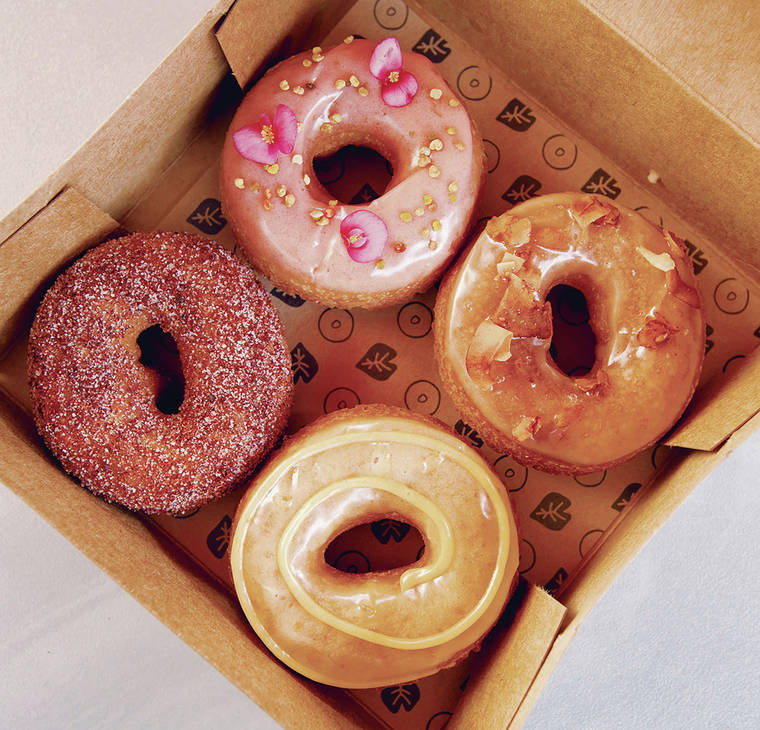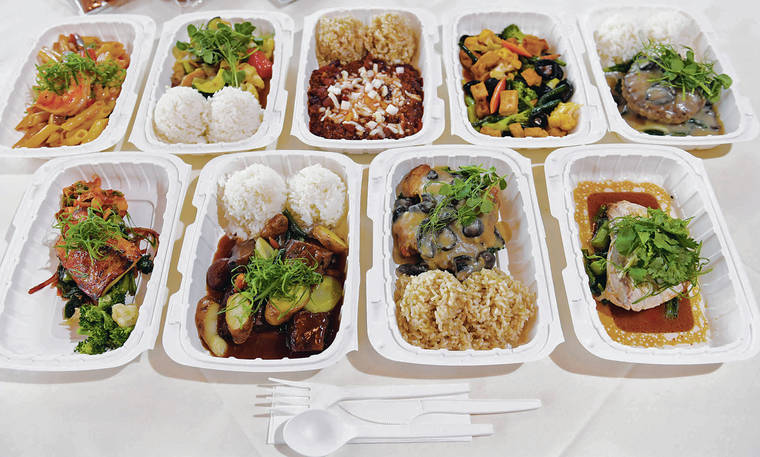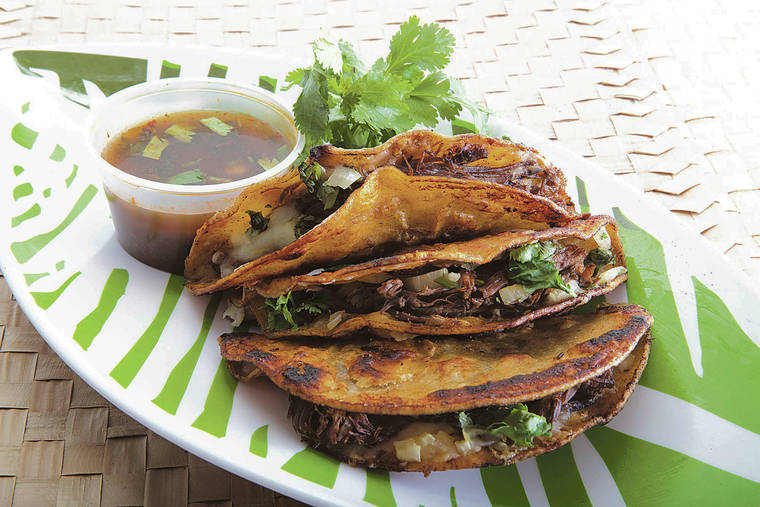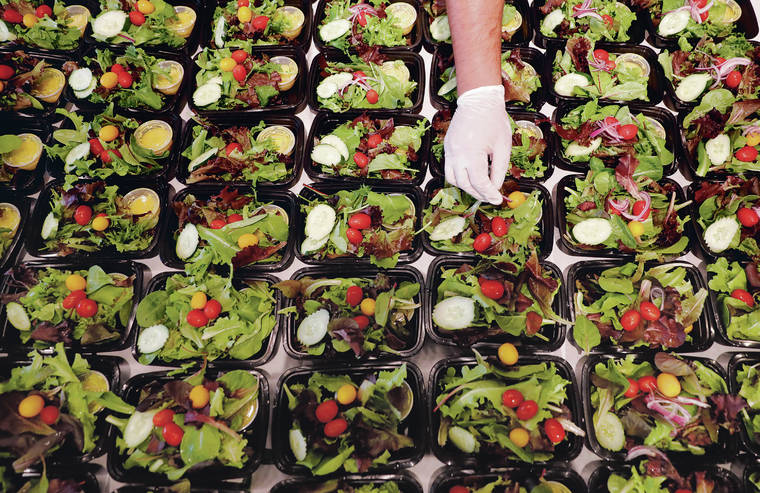The 2020 pandemic was the biggest disaster to hit the food industry in recent history. Statewide, 15% of restaurants have closed permanently since the pandemic began. Their ranks include Alan Wong’s and Town, two restaurants that significantly shaped the local food scene for over 25 and 16 years, respectively. The Hawaii Restaurant Association reported that a poll of owners showed 65% of the state’s 3,600 restaurants may close without more patronage and/or government assistance.
In light of the dire news and against all odds, eateries continued to open throughout the year. Many of them — ranging from cafes such as Sun Mix Tea to full-service restaurants like Heiho House and Kapa Hale — were projects already in place and their owners were past the point where they could walk away.
Life continued to roll on — albeit with temperature checks, masks and lots of hand sanitizer — and just as in a typical year, several trends emerged on the restaurant scene, most pandemic-related, others not.
Here’s a look back at how we ate in 2020:
Charcuterie filled needs
From the start of stay-at-home orders, charcuterie boards fulfilled our needs to eat and stay busy. Arranging the various food items kept idle hands busy, and for those with no cooking skills, a board provided an eye-catching meal to share in real life or with a virtual audience. Square Barrels sold charcuterie-to-go as a romantic date-night package when going out to the movies or dinner was impossible. By the end of the year, people were getting creative with boards.
>> RELATED: Opens in a new tab Words that shaped the way we ate in 2020 Opens in a new tab
>> RELATED: Predictions to chew on for 2021 Opens in a new tab
The reopened, reconfigured 12th Ave Grill came up with an extravagant housemade seafood charcuterie board for the holidays, and at home people were crafting dessert boards for Santa and adding local touches such as crackseed and Chinese- style preserved fruit.
We socialized … online
Shutdowns and the need for social distancing kept us apart, but we continued to share our tables via Zoom, Facebook and other meet-up apps. The Four Seasons Resort and Tommy Bahama were among the first to jump on board in the spring, with happy hour workshops and cocktail hours to stay in touch with customers. Organizations hosted fundraising events online — the Waikiki Community Center, for one, held its fall benefit via Facebook, inviting guests to purchase meals from Duke’s Waikiki and share in the festivities.
Sweet treats welcomed
Many an out-of-work pastry chef or home baker looking for an income stream had time to launch a pastry business, fueling a cottage industry dedicated to feeding a hunger for small indulgences. Desserts and sweets had the power to bring smiles and lift spirits in an otherwise depressing year. People lined up for Holey Grail Donuts, and it was easy to find your next treat on Instagram, where a single yummy-looking dessert picture was all it took to win a paying audience.
The great outdoors
The comfort of air-conditioning took a backseat to safety, and with open air and sunlight said to kill the coronavirus, restaurants scrambled to find places to seat guests eager to bask outside. Tents were pitched and makeshift tables were set up on sidewalks or in parking lots. In Kaimuki a mini parklet for diners appeared in parking stalls outside Bean About Town on Waialae Avenue. More parklets are planned by the nonprofit Better Block Hawaii, with the aim of better utilizing outdoor public spaces.
We ate out of boxes
The inability to eat in restaurants during shutdown periods or because of pandemic fears meant a lot of our meals were packed to go. Normal single- order takeout quickly gave way to meal kits that could last a week, reducing time spent searching for food. The meals ranged from fully prepped to kits that required some cooking, for those looking for a little family activity. And food purveyors were pressed to find ways to package food in forms that made it easier for people to purchase and enjoy over time. Restaurants, for example, started offering frozen meals. Big Island Candies built on its frozen pie concept to offer frozen pie-crust manju people could bake at home.
Boba 2.0
The first boba drinks were treacly, syrupy fat-and-sugar bombs. The new wave of cafes such as Momo Tea and Sun Mix Tea feature more nuanced flavors of pure-leaf teas from China and Taiwan. Of course, you can still order drinks with cheese foam and fruit jellies, but if it’s pure tea you want, the white peach oolong and jasmine green teas are exquisite. By the end of the year, newbs were lining up for a taste of The Alley tea room at Ala Moana Center, where Lulu drinks of fresh fruit and tea take their place alongside signature brown-sugar boba Deeriocas.
Birria tacos ruled
In summer, some of the first photos of birria tacos started appearing on Instagram in all their cheesy splendor, served alongside rich red stew for dipping. It all looked too irresistible to ignore and, boom, we had a viral hit on our hands, with people scouring the island in search of the best birria tacos. New vendors popped up in food trucks, parking lots and storefronts from Honolulu to Wahiawa to Kailua. One of my favorites, Taco Bout It Hawaii, is set to open a small storefront in 2021.
Green was good
Restaurateurs reported more diners looking for healthier options — ordering the Ayurvedic meals served by chef Vikram Garg at TBD …; seeking out juice bars offering green smoothies, golden milk and celery juice; or requesting vegetarian options when ordering chef’s meal kits. The result of the pandemic may be a more health-conscious, green-eating populace going forward.
Looking ahead
I see reasons for optimism in 2021, as restaurants have taken the time to reassess their philosophies and what they want to put forward. A lot of thought and planning have gone into menus, so much so that in December I had the best meals of the year. There is less emphasis on the trivial, the frivolous and faddish, and more focus on what’s most important to people; that is, food that nourishes body and soul. I like this direction. Happy eating in 2021! And to restaurateurs, thank you for your hard work and resilience. Fighting!
Nadine Kam’s restaurant reviews are conducted anonymously and paid for by the Star-Advertiser. Reach her at nkam@staradvertiser.com.








